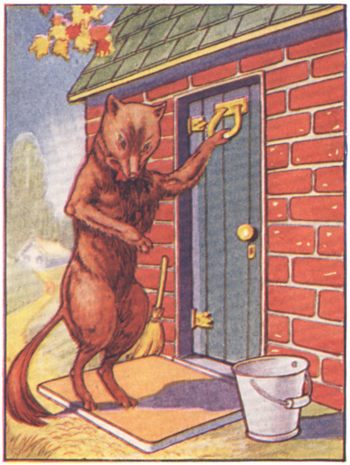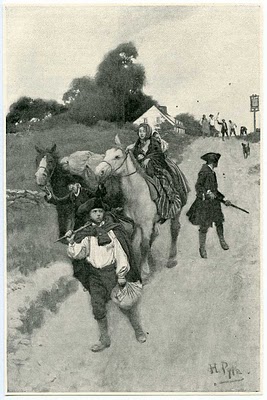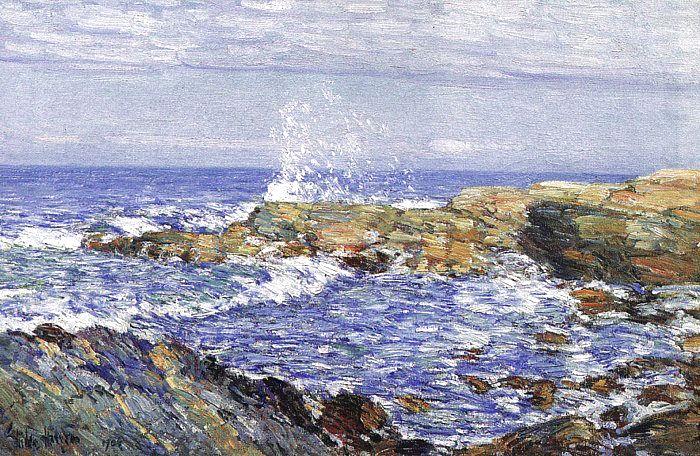
Source: Hey Diddle Diddle, Fennec, Wikimedia Commons
Now that you are familiar with personification, hyperbole, and refrain, let’s see how authors use these devices to achieve their purposes.
Personification

Source: Wolf, Dick Hartley, Project
Gutenberg
We now know that personification is a device that writers use to give nonhuman things human qualities so that readers can relate to what authors are saying. Personification connects readers with the object that is personified. Personification can make descriptions of nonhuman entities more vivid or can help readers understand, sympathize with, or react emotionally to nonhuman characters. Let’s look at a short poem by Jack Prelutsky called “A Wolf Is at the Laundromat.” Click on the link to read it. As you read, write down every time you see an example of personification.
When you have finished, click below to see a few examples.
Sample Response:
“it tips its hat”, “it combs its hair”, “it clips its toes”, “it’s only there to clean its clothes” Those descriptions help us “see” the wolf in our minds. The poet is using imagery to help us picture the wolf.
Now that you’ve identified all the examples of personification in this funny little poem, can you think about why the poet might have personified a wolf in this way? What do you the reader understand about this particular wolf because of the way the poet used personification? You might want to take a minute to jot down a few thoughts. When you finish, click below to see a sample response.
Sample Response:
The poet uses these ordinary things that humans do to demonstrate that this wolf is not the stereotypical bad wolf of stories and legends. He’s not a werewolf; he’s a friendly, ordinary wolf.
Hyperbole

Source: Tory Refugees by Howard Pyle,
Howard Pyle, Wikimedia Commons
Now, read the following excerpt from Ralph Waldo Emerson’s “A Concord Hymn,” written in 1837 to honor the great Battle of Concord during the Revolutionary War. Here, the author uses hyperbole to make a dramatic, important point. Click on the line in which the hyperbole appears to see an explanation of how the author uses this device. You may then click on all the lines to see an explanation of how the author uses the information within them.

Refrain
Remember, refrain is a device writers use when they want to repeat verses or phrases for emphasis, usually at the end of a stanza. Read the following poem and note the use of a refrain.
The Tide Rises, the Tide Falls
By Henry Wadsworth Longfellow

Source: Isle of Shoals, Childe Hassam, Wikimedia Commons
The tide rises, the tide falls,
The twilight darkens, the curlew calls;
Along the sea-sands damp and brown
The traveller hastens toward the town,
And the tide rises, the tide falls.
Darkness settles on roofs and walls,
But the sea, the sea in the darkness calls;
The little waves, with their soft, white hands,
Efface the footprints in the sands,
And the tide rises, the tide falls.
The morning breaks; the steeds in their stalls
Stamp and neigh, as the hostler calls;
The day returns, but nevermore
Returns the traveller to the shore,
And the tide rises, the tide falls.
Can you see why the refrain is so effective in this poem? What does the idea of the recurring tides have to do with the overall meaning of the poem? When you think you have an answer, click below for a sample response.
Sample Response:
The refrain with the tides constantly rising and falling suggests that a man’s life (the traveler) is small when compared with nature and its ongoing cycles; people come and go, but the ocean tides continue to rise and fall as they always have.